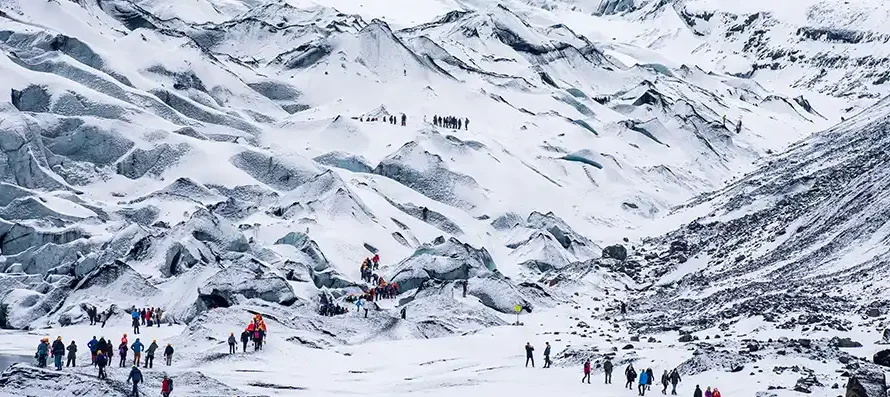
Uttarakhand in winter is a snow-covered dream—majestic peaks, frozen lakes, and alpine meadows blanketed in white. But if you think a winter trek here is all cozy blankets and picture-perfect Instagram shots, think again. Winter trekking in Uttarakhand is as much about perseverance and laughter as it is about breathtaking views. Here’s the relatable, funny, and informative reality of trekking in the Himalayas during the snowy season.
Expectation: You imagine strolling gracefully through snowfields, stopping occasionally to capture the perfect selfie, all while breathing in the crisp Himalayan air and feeling like a professional explorer.
Reality: You’re sliding down icy trails, stumbling over hidden rocks, shivering uncontrollably, and trying to keep your camera steady while your gloves freeze. That Instagram-perfect moment? Often ruined by wind-blown hair, red cheeks, or someone photobombing your shot.
Winter treks are stunning, no doubt. But they also come with challenges that every trekker experiences: wet socks, frozen hands, and a deep appreciation for hot Maggi and chai at mid-trek huts.
Layering Olympics: You start with three layers, add four more, then realize you still forgot your thermal socks.
Footwear Drama: Trekking shoes vs. snow = slippery slapstick comedy.
Snack Savior: Maggi, instant soup, or chocolate becomes the ultimate treasure.
Selfie Struggle: Trying to pose for Instagram while your face is red, nose is running, and gloves won’t let you tap the screen.
The Over-Packer vs. Minimalist: One friend carries half their house, the other survives on sheer willpower.
If you’ve trekked in winter, you’ve lived these moments. If not, get ready—you’re in for an adventure that’s as hilarious as it is breathtaking.
Why Visit: Moderate trek with stunning snowfields and a sunrise summit.
Duration: 5–6 days.
Tips: Best for beginners wanting a Himalayan winter experience.
Why Visit: Short trek, stunning winter forest, sunrise from Chandrashila peak.
Duration: 2–3 days.
Tips: Accessible for weekend trips; ideal for family or group trekking.
Why Visit: Less crowded, frozen lakes, panoramic Himalayan views.
Duration: 4–6 days.
Tips: Carry insulated gear; nights are freezing.
Why Visit: Offbeat snow meadows, perfect for solitude and photography.
Duration: 3–5 days.
Tips: Ideal for adventure seekers who love peaceful treks.
Why Visit: Beautiful snow-adventure trek, suitable for both beginners and experienced trekkers.
Duration: 5–6 days.
Tips: Offers great mountain views; moderate fitness required.
Check Weather & Trail Conditions: Snowfall can block roads or trails; always be prepared.
Layer Up: Thermal wear, gloves, waterproof jackets, and snow boots are musts.
Pack Smart: Energy bars, dry fruits, and Maggi = survival essentials.
Safety First: Hire local guides if unsure; beware of slippery paths and avalanches.
Acclimatize: Some treks reach altitudes above 12,000–14,000 ft—take it slow.
Winter trekking in Uttarakhand isn’t just a trip—it’s a story you’ll tell for years. Your calves will hate you, your socks will betray you, but your memories, photos, and experiences? Absolutely priceless.
Whether you’re a beginner or an adventure junkie, Uttarakhand has a winter trek for everyone—from Auli’s snow sports to Brahmatal’s quiet frozen lakes. So pack your layers, lace up your boots, and embrace the snowy adventure!
Plan your journey with us!
Some of the most popular winter treks include Kedarkantha Trek, Auli Ski Trek, Brahmatal Trek, Chopta-Chandrashila Trek, Dayara Bugyal, and Khaliya Bugyal. Each offers snow-covered trails, stunning Himalayan views, and unique trekking experiences.
Winter treks are best undertaken from December to February, when the snow is ideal for trekking and skiing. However, some treks are accessible in late November or early March, depending on snowfall.
Winter treks vary from beginner to moderate difficulty. Treks like Kedarkantha are beginner-friendly, while others like Brahmatal or Chopta-Chandrashila require a moderate fitness level due to snow and steep climbs.
Important gear includes thermal innerwear, waterproof jackets, insulated gloves, trekking shoes with good grip, snow boots, sunglasses, trekking poles, and energy snacks. Layering is key for winter treks.
While beginner-friendly treks can sometimes be done independently, hiring a local guide is recommended for safety, snow navigation, and insights about the trail and weather conditions.
Yes, if you’re well-prepared, check weather forecasts, and carry appropriate gear. Be cautious of icy trails, avalanches in high-altitude treks, and sudden weather changes.
Absolutely! Treks like Kedarkantha, Nag Tibba, and Chopta-Chandrashila are beginner-friendly. Proper preparation, acclimatization, and guidance make these treks enjoyable even for first-timers.
Highlights include snow-laden meadows, frozen lakes, sunrise/sunset views from peaks, Himalayan flora, and the serenity of offbeat trails like Dayara Bugyal and Khaliya Bugyal.
